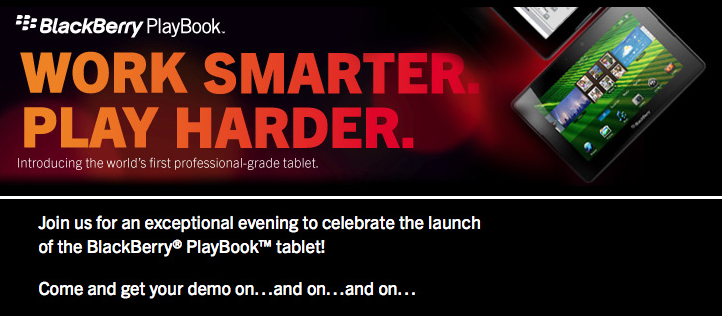RIM bets big bucks on Playbook success: Five key questions

Research in Motion on Thursday night will show off its PlayBook to select media types in New York and the divergence in expectations is notable.
Most folks I've talked to---including TechRepublic's Jason Hiner, Jason Perlow and Rachel King---have relatively subdued expectations. There are more than a few wild cards with the PlayBook. On the other hand, RIM has a real opportunity because Android tablets have underwhelmed so far. With the right product, RIM could be No. 2 to Apple's iPad in the consumer market and defend its enterprise positioning.
The other wrinkle key divergence here is the potential difference between RIM co-CEO Jim Balsillie's take and what consumers will actually do.
In any case, RIM is betting big on the PlayBook's success and putting money on it. In RIM's annual report, purchase commitments for materials and contract equipment manufacturers surged at the end of the fourth quarter. These purchase commitments surged to $10.8 billion, up from $6 billion in the third quarter.
So what? RIM is clearly building up for a big PlayBook launch. Morgan Stanley analyst Ehud Gelblum said in a research note:
Purchase commitments at the end of FQ4 expanded to an all-time high of $10.8B, up from $6.0B in FQ3. Out of the $10.8B, $8.5B represents purchase orders placed with contract manufacturers, up from $5.8B in FQ3 and represented the largest chunk of the increase. So-called “other commitments” (which consist of purchase orders or contracts with suppliers of raw materials) also increased noticeably growing from ~$0 in FQ3 to $2.2B in FQ4. Considering that RIM is guiding to shipments being down in FQ112 (13.5-14.5M vs. 14.9M in FQ411), we believe most if not all of the $2.7B increase in purchase orders placed with contract manufacturers is related to its new Playbook tablet launching on April 19th. Assuming a $500 ASP and 20% gross margins – i.e. that 80% of that $500 ASP represents COGS paid to contract manufacturers – implies that RIM has reserved capacity for nearly 7M Playbooks from its contract manufacturers (the $2.7B increase divided by ~$400 of cost of goods sold per Playbook).
Here's where things get interesting. Gelblum is projecting 3.5 million PlayBooks to be sold in the next fiscal year. Other analysts come well under that mark.
That gives us a few scenarios:
- The PlayBook is going to sell really well and few see it yet.
- RIM had to pay up with longer commitments to secure capacity and components for the PlayBook.
- Balsillie will be vindicated with a dash of low expectations combined with strong sales.
In any case, RIM's big bet leads us to our top five questions revolving around the PlayBook launch.
Will the PlayBook sell? As noted before, Balsillie dumped the underpromise, overdeliver CEO playbook. RIM will either be vindicated or be faced with an embarrassing glut of tablets.
Does the lack of native email matter? RIM has been dinged because you need a BlackBerry to access corporate email with the PlayBook. However, it's unclear whether consumers will really care. You can get Web mail as many already do. Corporations may already have BlackBerries ready to tether.
Can the PlayBook perfect Frankenstein? RIM is launching a QNX powered device that can run Android apps as well as BlackBerry software. It's a virtualization dream. Unless these various app players in the PlayBook can't keep up. If the PlayBook---a Frankentablet---can't be seamless look out below.
Will enterprises go with the PlayBook? Balsillie boasted that CIOs were holding up pilots and deployments for the PlayBook. The problem is that RIM still doesn't have much room for error. Sure RIM is playing a home game in business technology, but the employees are bringing their iPads to work.
Are developers going to be completely confused? In the long run, RIM is going to have to get developers onto its QNX platform. However, RIM is supporting Android apps. Why would a developer run to the PlayBook for a native QNX app?
Related:
